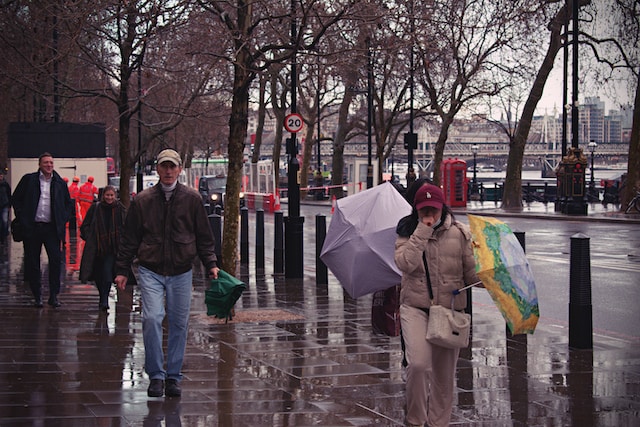Pedestrian safety is a critical concern in today’s urban landscapes, where bustling streets and busy intersections intersect with the movement of vehicles and people on foot. Ensuring the safety of pedestrians is not only a matter of basic human rights but also a key factor in creating livable and inclusive cities.
To achieve this, it is crucial to promote a culture of pedestrian safety that prioritizes the well-being and protection of individuals navigating on foot.

Understanding Pedestrian Safety
Examining statistics and data on pedestrian accidents and fatalities helps understand the gravity of the issue and identify trends and patterns. Common causes of pedestrian accidents, such as distracted driving and inadequate infrastructure, need to be addressed through targeted interventions.
Pedestrian accidents have severe physical, emotional, and economic impacts on individuals and communities, affecting the quality of life and productivity.
Vulnerable populations, including children and older adults, require tailored strategies to enhance their safety. Environmental factors like street design and lighting, along with behavioral factors such as adherence to traffic rules, play significant roles in pedestrian safety.
Understanding these factors enables the development of effective strategies to promote a culture of pedestrian safety.
Promoting Pedestrian Safety: Strategies And Initiatives
- Sidewalks and crosswalks: Enhancing the design, accessibility, and maintenance of sidewalks and crosswalks to provide safe and convenient pathways for pedestrians. This includes features such as adequate width, clear markings, appropriate signage, and curb ramps for accessibility.
- Traffic calming measures: Implementing measures to reduce vehicle speeds and create safer environments for pedestrians, such as speed humps, roundabouts, raised crosswalks, and narrowed roadways. These measures help promote a pedestrian-friendly atmosphere and discourage reckless driving.
- Pedestrian-friendly street designs: Introducing urban planning and design principles that prioritize pedestrian safety, such as mixed-use development, traffic calming zones, pedestrian plazas, and complete streets. These designs aim to create spaces where pedestrians feel comfortable, encouraged, and safe to walk.
Education And Awareness Campaigns
Conducting public awareness campaigns to educate pedestrians about safe behaviors, such as using designated crosswalks, obeying traffic signals, and avoiding distractions like electronic devices while crossing the road. Promoting the importance of pedestrian visibility and wearing reflective clothing during low-light conditions can also be emphasized.
Raising awareness among drivers and other road users about the rights and vulnerabilities of pedestrians. This includes educating drivers on the significance of yielding to pedestrians, observing speed limits, avoiding distractions, and being alert in areas with high pedestrian activity.
Engaging schools and community organizations in pedestrian safety initiatives. This can include integrating pedestrian safety education into school curricula, organizing community events, and collaborating with local stakeholders to raise awareness and advocate for safer pedestrian infrastructure.
Legislation And Enforcement
Establishing and enforcing traffic laws and regulations that prioritize pedestrian safety. This includes laws pertaining to crosswalks, yielding to pedestrians, speeding, distracted driving, and impaired driving. Stricter penalties for violations that endanger pedestrians can act as a deterrent and enhance compliance.
Enhancing enforcement efforts to ensure compliance with traffic laws related to pedestrian safety. This can involve increasing police presence in high-risk areas, utilizing automated enforcement technologies like speed cameras and red-light cameras, and implementing targeted enforcement campaigns to address specific issues.
Encouraging advocacy organizations, policymakers, and community leaders to support and promote pedestrian safety. This includes advocating for stronger legislation, increased funding for pedestrian infrastructure improvements, and greater investment in law enforcement resources dedicated to enforcing pedestrian safety measures.
Role Of Technology In Pedestrian Safety
Exploring advanced sensor technologies such as cameras, radar, and LiDAR is vital for enhancing pedestrian safety. These technologies enable the detection of pedestrians near roadways, providing real-time alerts to drivers and potentially preventing collisions.
Utilizing intelligent transportation systems can optimize traffic signal timings and prioritize pedestrian movements at intersections. Implementing features such as pedestrian countdown timers, leading pedestrian intervals, and adaptive signal control systems based on pedestrian demand can significantly improve pedestrian safety.
Examining the potential of automatic emergency braking systems and advanced driver assistance systems (ADAS) can further enhance pedestrian safety. Automatic emergency braking systems use sensors and algorithms to detect obstacles, including pedestrians, and automatically apply the brakes to prevent or mitigate collisions.
ADAS, incorporating pedestrian detection and avoidance capabilities, provide visual and audible warnings to drivers and can even intervene with autonomous braking or steering maneuvers to avoid accidents. These technologies offer additional layers of protection and support for drivers in avoiding pedestrian collisions.
While technological advancements hold significant promise for pedestrian safety, it is crucial to address challenges and limitations. Factors such as technological reliability, affordability, and equitable access to advanced safety features need to be considered.
Nonetheless, the integration of these technologies presents valuable opportunities to mitigate risks and create a safer environment for pedestrians on roadways.

Challenges And Opportunities
Promoting pedestrian safety involves addressing financial challenges, overcoming resistance, and balancing competing priorities. Financial challenges can be tackled through diverse funding sources and innovative financing mechanisms.
Stakeholder resistance can be mitigated by effective communication, education, and stakeholder engagement, emphasizing the benefits of pedestrian safety and involving them in decision-making processes. Balancing competing priorities, such as traffic flow and parking availability, requires comprehensive planning and stakeholder input to find equitable solutions that prioritize pedestrian safety.
Collaboration among different sectors and public-private partnerships play crucial roles in developing comprehensive pedestrian safety strategies. Public-private partnerships bring in private entities’ expertise, funding, and technological advancements, facilitating the adoption of innovative solutions and leveraging additional resources.
Emerging technologies, data-driven approaches, and ongoing research are instrumental in enhancing pedestrian safety. Connected vehicles, smart infrastructure, and data analytics can improve communication, infrastructure design, and decision-making.
Real-time data, predictive analytics, and machine learning aid in identifying high-risk areas and informing targeted interventions. Continuous research and evaluation ensure evidence-based practices, facilitate knowledge sharing, and support the dissemination of best practices in pedestrian safety.
Conclusion
Prioritizing pedestrian safety and implementing these strategies, can pave the way for safer and more pedestrian-friendly communities, where individuals can navigate streets with confidence and without fear. Promoting a culture of pedestrian safety is a shared responsibility, and together, we can create cities that prioritize the well-being and protection of pedestrians, fostering vibrant and sustainable urban environments for all.



